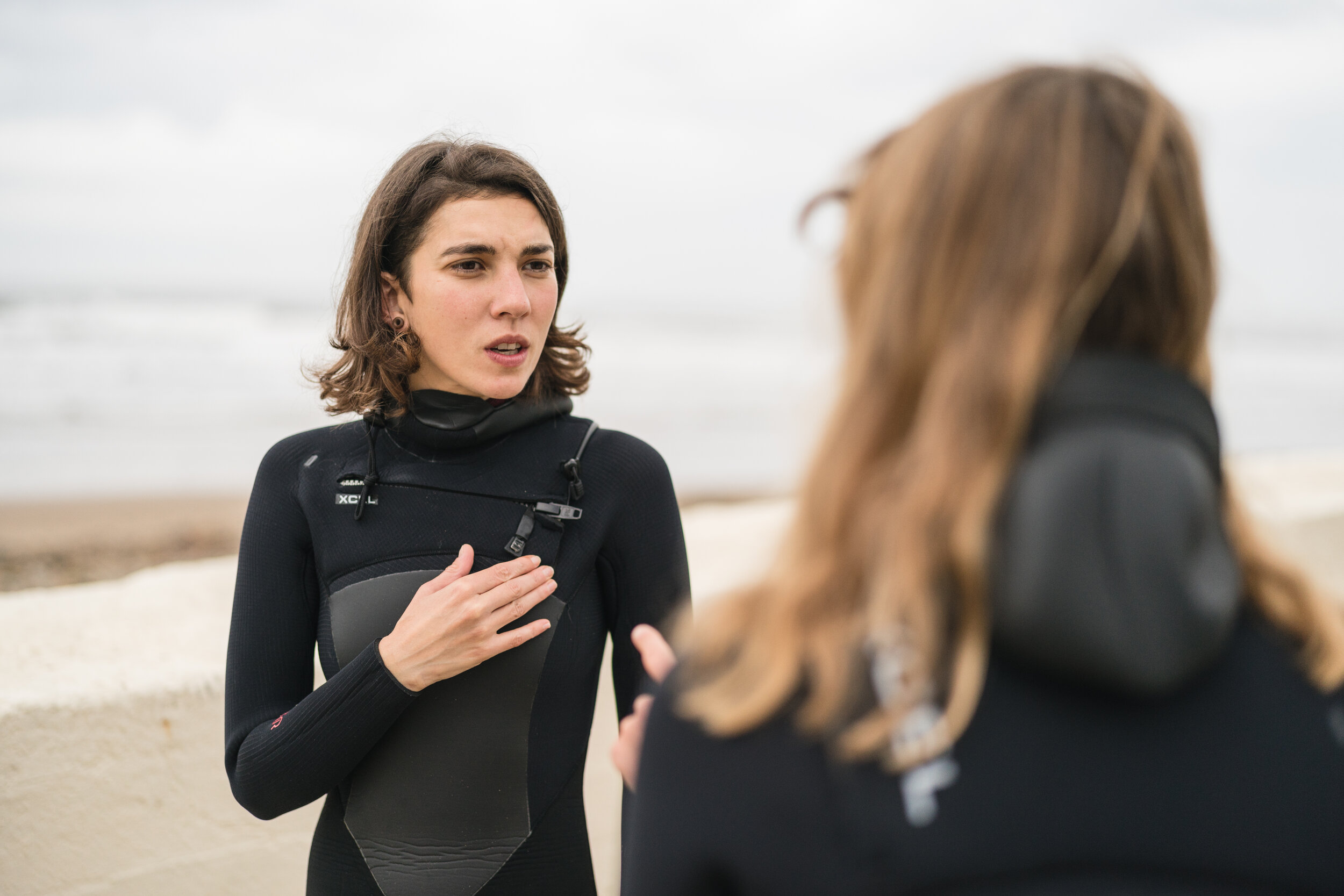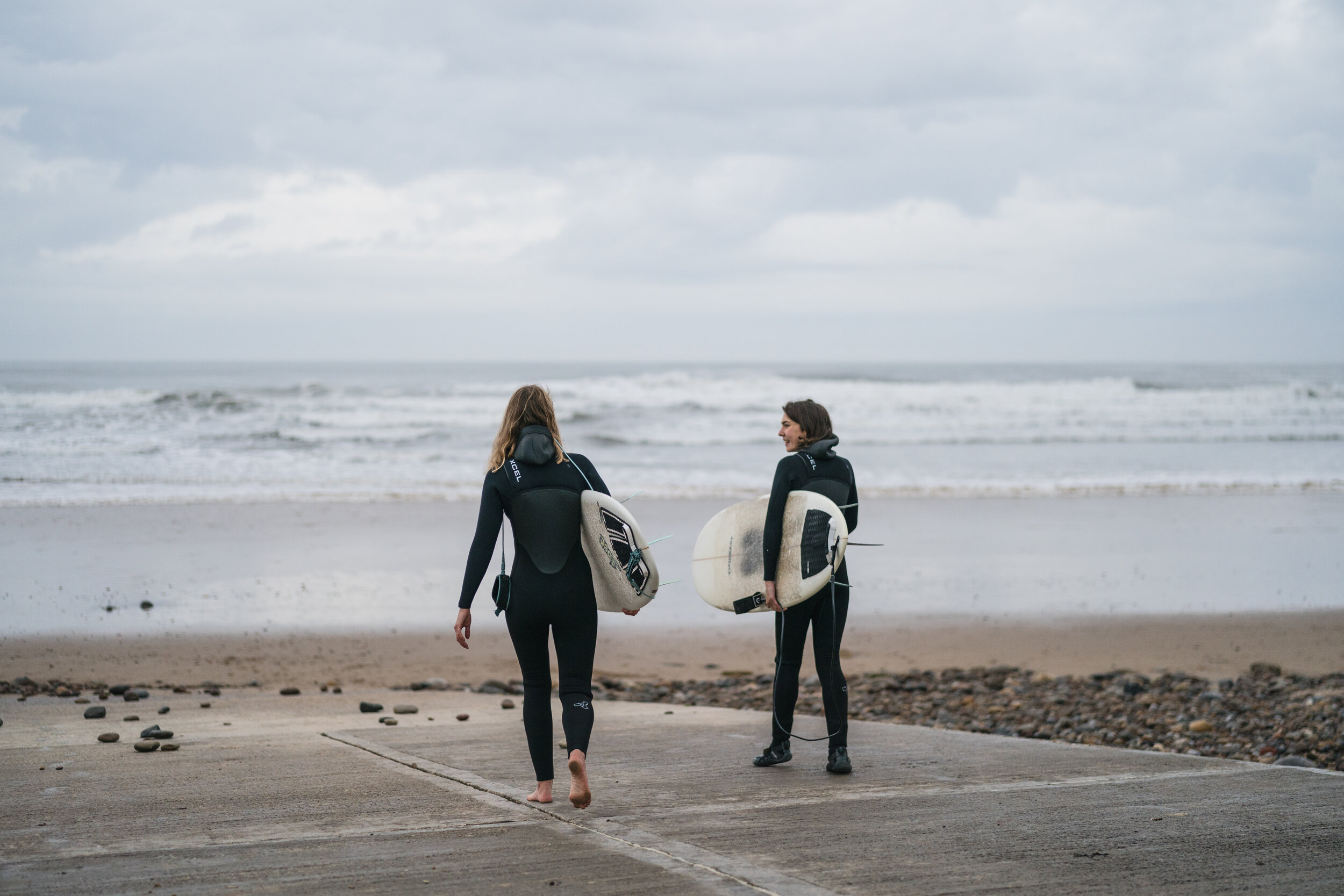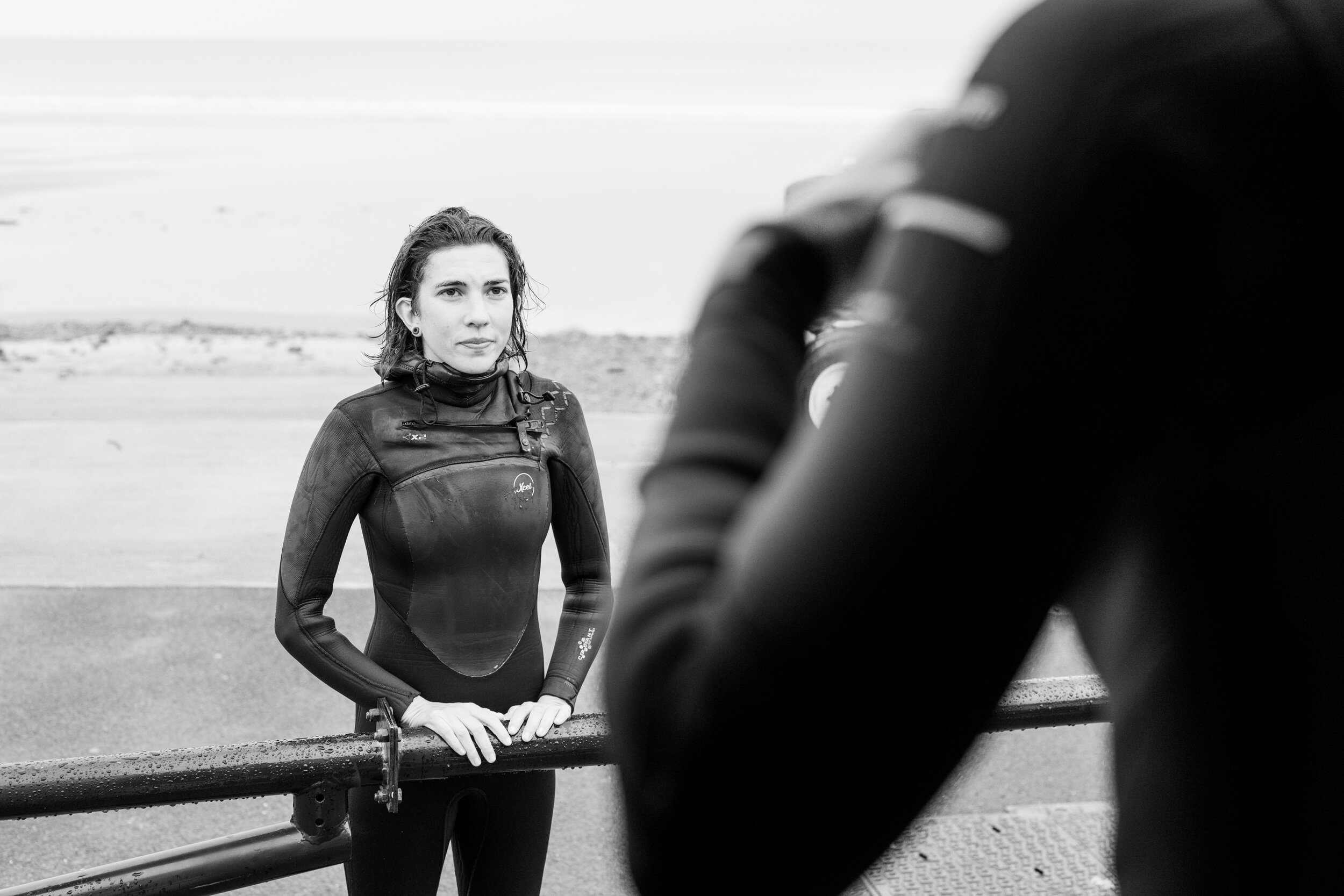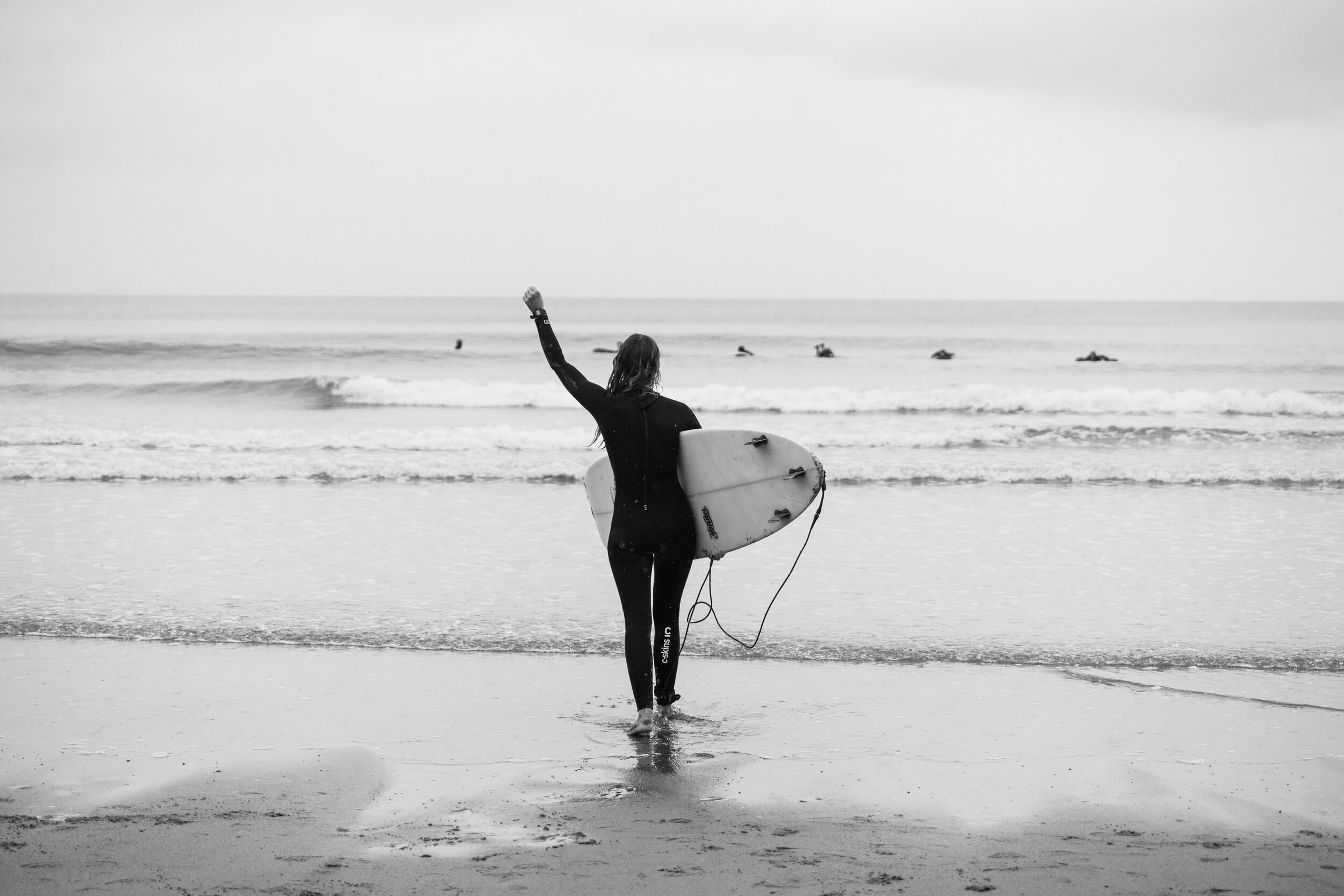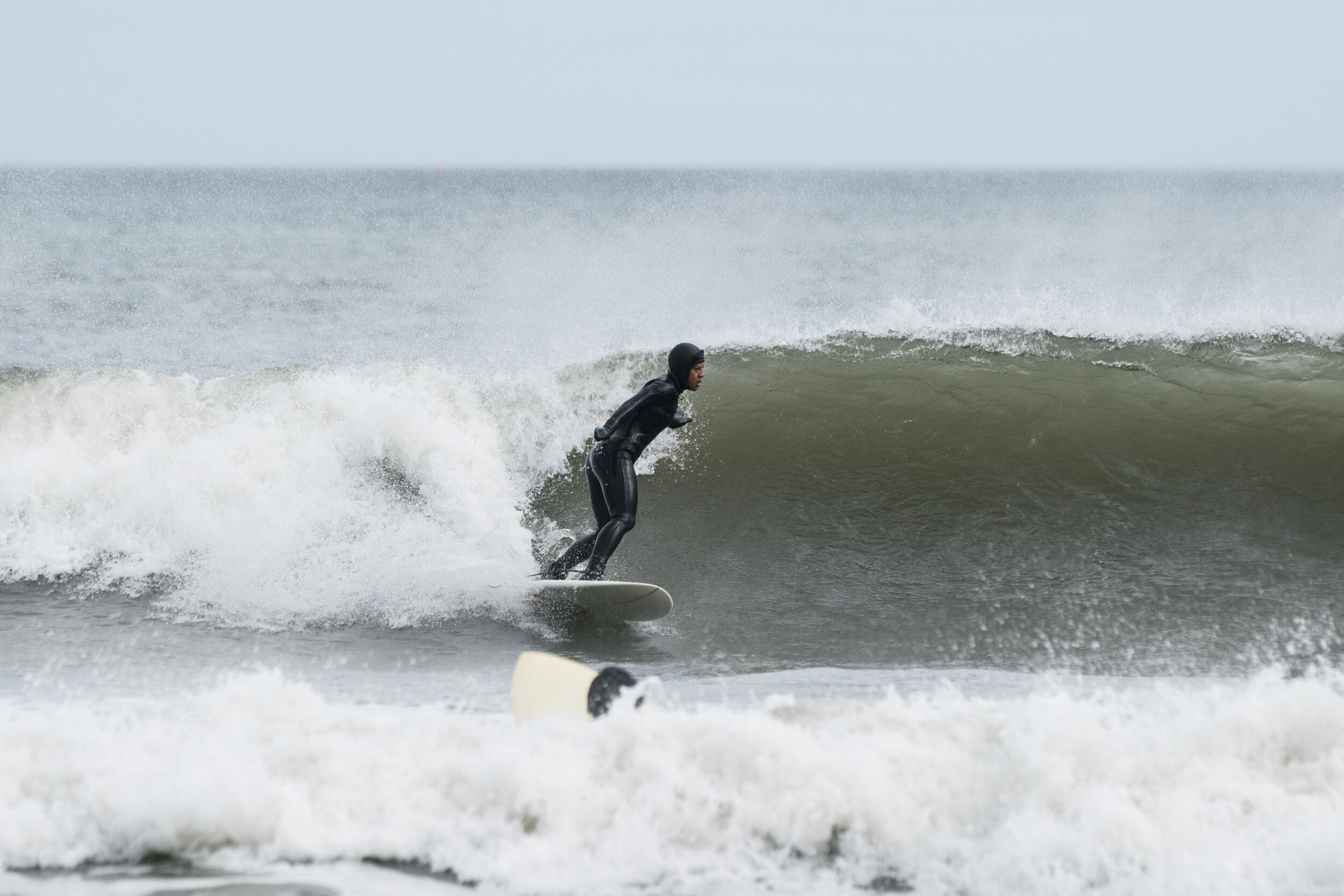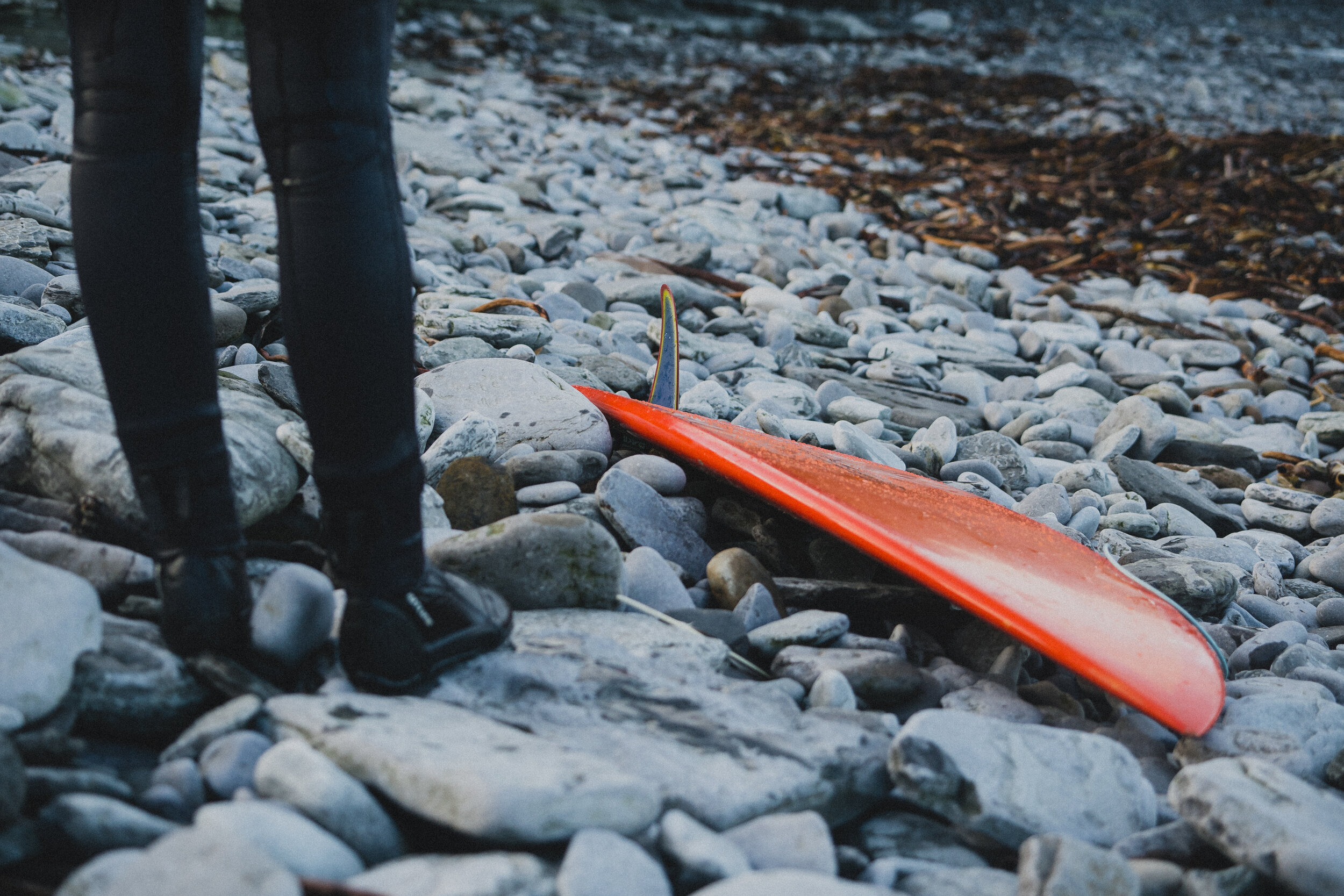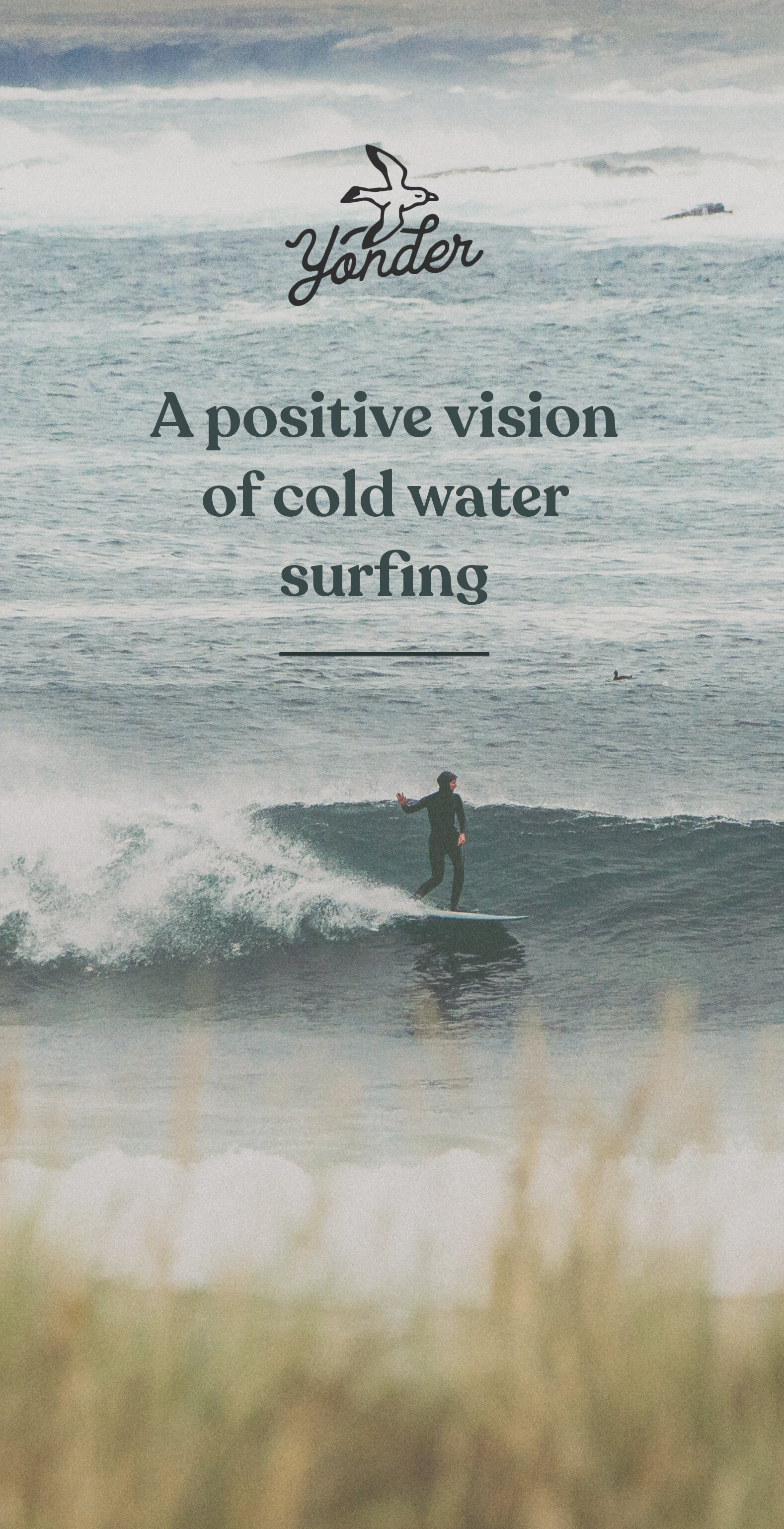Female Winter Wetsuit Guide
By Emma Tweddle
@twedzypie
So as you can imagine, I’ve been through my fair share of suits over the years. Some fairing the test of time and others that have started to fall apart after a few dips. There are a lot of things to consider when choosing a new suit - all vitally important if you don’t want to waste your hard earned cheddar.
Alongside your surfboard, your wetsuit is the most important piece of equipment to consider. A bad suit will have you cutting sessions short, feeling unmotivated to get out in the winter. A good suit will see you through a two to three hour session in mid-winter no problem.
The technology, flex and warmth of winter wetsuits has rapidly improved in the past decade - as has the availability of decent winter suits for women. It’s a big investment - usually £250-400 for a good winter wetsuit and with regular use I would expect to get perhaps maximum three winters from one so it is worth getting it right.
Hopefully this totally independent and impartial women’s wetsuit guide will shed some light on the decisions you will need to make before you commit to making yourself skint!
New or Second Hand?
Each to their own on this one - I love a good second hand suit found hidden in the realms of facebook market place or ebay but equally its always a special day treating yourself to a brand new wetty.
Thickness
If you’re surfing the North East coast in the winter my recommendation would be the thicker the better but perhaps most important is a good fit and good seams. Trust me there is nothing worse than having to get out of the perfect session early because you’re too cold. Equally you also don’t want to be spending your session slowly turning blue. The trade off with a thicker suit is less flexibility but personally, as i’m quite a slim build, I require all the extra mm’s I can get. Suit thickness can be just one thickness all over (a 5mm or 6mm suit) but also can be multiple thickness’ (for example a 5/4/3mm) this just means certain parts of the suit are made with thinner neoprene giving you extra flexibility - for example these suits usually have a chest thickness of 5mm but under the arm pits may be made with a thinner material. I always opt for a 6/5mm suit for the North East UK in winter - I’ll happily take the trade off for less flexibility if it means a longer session. I think a 5/4/3mm would also be fine too. I know that Sally prefers a 5mm suit to the thicker suits, everyone is a little different.
In the Summer months I usually opt for a 4mm suit - but again thats all down to preference and how much you feel the cold. I have been known to don a winter suit even in the summer months in fact, old winter suits are perfect summer suits in the North East, the odd hole or wear doesn’t matter as much.
Back Zip vs Chest Zip
Back zips are arguably easier to put on as the entry to the suit is made bigger but the disadvantage to back zips is you are more liable to cold water getting into the suit while taking sets on the head. Chest entry suits are designed to avoid this and are warmer because of this design. They can take some getting use to at first as getting in & out of them is definitely a dark art all winter surfers have to learn eventually but you’ll 100% benefit in the long run.
Hood vs no hood?
This one is always a question my mates ask me when they’re buying a suit. If you can get down with a chest entry suit and you’re gonna be surfing in cold conditions a hooded suit is way warmer. When it is too warm you can always wear the hood down but this isn’t always the most comfortable and can sometimes cause a killer wetsuit rash.
Sometimes it might be worth considering buying a suit without a hood and just buying a hooded rash vest to go under it for when you need one if you’re gonna be using it all year round or mainly in the warmer months. I know that Sal has had reports from some of the girls she teaches of thermal hooded rash vests working wonders too.
Which Brand?
There is an array of different brands out there to choose from, personally for me these are my top picks but I would always recommend buying local if you can, so you can try before you buy and get the best fit for you.
In the current climate there does seem to be a huge wetsuit shortage but hopefully things will be back on track for the spring months and winter 2021. There’s been a huge increase in people taking up surfing in 2020 and combined with order cuts back in March when companies weren’t sure what was happening and then supply issues also due to Covid it means the demand is definitely higher than the availability at least here in the UK.
I’ve basically listed a few of the suits that I have worn and then asked Sal and Yonder Ambassador Jen Wood to tell me what they like to wear and why. Each of us are different with different requirements so hopefully this proves a useful and impartial women’s winter wetsuit guide.
Xcel
Tried and tested, one of my favourite brands of suits - warmest suits i’ve had. What I really love about these suits is all the seams are fully taped and the chest zips are really robust and great quality (this is something I always like to look out for when purchasing a new suit) I prefer the Infiniti over the DryLock (my Infinitis have always seemed to have lasted longer?) Fitting wise Xcel are decent - maybe slightly too much boob room but not as bad as other brands out there. Minimal flush when duck diving sets. Sally has recently purchased an Infiniti too and is impressed with the quality too - she will be buying Xcel again.
The negative with Xcel is they come with a pretty hefty price tag but this is definitely reflected in the quality - so while it might seem like a huge expense, if you can afford it, it’s worth it in my opinion.
Luna
Jen Wood lives in the wilds of Northern Scotland, she works with Luna wetsuits and has been wearing them full time for a few years now. She swears by them and they are popular in the cold waters of Scotland. They do a 6/5/4mm and an all 4mm hooded suit. The suits look really well made and would definitely be a good shout for colder climates as that is Luna’s focus as a brand. They also do great mitts. As a UK company it’s also a great one to get behind.
Finisterre
Sally is lucky enough to get suits from Finisterre which is also UK company based down in Cornwall. After using them for a couple of winters now she is really impressed. As a North East surfer she was definitely hesitant in using a 4mm hooded during the winter however two winters in she is a total convert. According to Sal, the suit fits well and looks good, it has quality seams so doesn’t flush and is flexible. The customer service is great with free postage and returns policy and a great wetsuit repair service too. They also have a really handy and detailed fitting guide on their website which helped her to get the right size when purchasing. There are plans of a sustainable 5mm Yulex hooded this autumn so watch this space.
Ripcurl
Another tried and tested brand, I loved my Flash bomb with its quick dry lining it was great in the winter months when its hard to dry a suit between sessions! I felt mine was slightly more flexible than the Xcel but maybe not QUITE as warm but the difference was marginal. I felt the fit was good for me on the Ripcurl - similar to Xcel. My friend has also recently purchased a Rip Curl Dawn Patrol (chest zip without hood) and said that she's found it easy to get on not too low in the crotch. She did mention it flushed but it was minimal and was a nice toasty suit to wear.
Hotline
What I love about hotline is it the company was started by a woman, Brenda Scott-Rogers in Santa Cruz, California. Hotline are strong supporters of women surfers. I’ve had a Hotline before and was very impressed with the fit and flexibility of the suit - it was however one of my coldest suits to wear in the depths of winter so maybe a point to consider if you’re thinking Hotline may be the brand for you.
Sally has had a few Hotlines over the years. When she started surfing fifteen years ago it was challenging to find a wetsuit in her size. After learning quickly a hooded chest-zip suit was essential for keeping warm in the sea for longer, she splashed the cash on a Hotline wetsuit from Fluid Concept in Scarborough.
She actually disagrees with me and has never found them that flexible, but what she was impressed with was the fit and how long they lasted her.
Like Snugg over here, you can get measured up for a custom suit that is still made in the Hotline factory in Santa Cruz. Her first two suits carried the ‘Made in the USA’ logo in the lining, where as the last one (the same as what I have purchased in the past) had ‘Designed in the USA’ and wasn’t as good quality. She spoke to Brenda Scott-Rogers about the rise in competitors and the need to take production overseas to make their small business viable.
Gul
Extremely warm suits but fitting is slightly small on these so maybe try a size bigger than your usual. Maybe not as flexible as some of the other suits on the market. Mine was a second hand bargain from facebook and I didn’t regret it as it lasted me years.
Snugg
These guys tailor make your suit to your exact dimensions and are a UK based company and all the suits are handmade in their workshop in Cornwall. Pretty cool. What I didn’t find as cool was the creepy as hell fitting guide on the site, it’s never quite left my mind when winter wetsuit shopping.
C-Skins
Boots
Boots are so important to get right - if you buy too big they can feel clumsy on your feet and fill up with water - too small and they can actually be painful/uncomfortable to wear. There are two main types: Round Toe or Split Toe.
I personally prefer a round toe boot as they just feel more comfortable and I feel like they keep my feet warmer. Same as with the wetsuits above go to your local shop and try a few different brands on - they all have slightly different fittings and some will be easier to get on than others. Again, with thickness its personal preference - when i’m cold my feet are always the first things to go along with hands so I’m in 8mm booties in winter (No surprises there) and 3mm in the Summer.
Just a note when purchasing - take a look at the grip on the sole, ensuring that it is looks long lasting and well bonded.
Gloves & Mitts
A must have for the winter months - obviously gloves give you more dexterity but I would say mitts are warmer. I love my Rip Curl Flashbomb mitts & i’ve also hear great things about alders too. Glove wise I had a great pair of Xcel’s a few years ago that were also spot on.
Sally also agrees on opting for mitts over gloves! The fact your fingers are together and sharing that warmth is a huge plus. It also means you can go thicker, having 5mm of neoprene surrounding each finger in a glove means your fingers have to be a centimetre apart - that feels weird whereas 5mm mitts feel so much more comfortable. She’s had a few pairs of the cheaper Alder ones that have been great - the O’nell’s didn’t last as both her and Tom rubbed holes through theirs after only a winter of use. She also recently borrowed a pair of the 7mm Yamamoto Luna Mitts off Jen which she loved and will be purchasing in the future.
Wetsuit Care
It so important to look after your suit if you’re gonna get the most out of it. Make sure you wash it after every surf session, even if it’s just in the shower - that salt water will reek havoc with the seems & linings. Hang and try to dry if possible, always hang by folding in half from the waist to avoid stretch and wear - this is also a way to avoid the awful stench that can occur with half dried suits and boots but I can’t say i’ve ever managed to avoid entirely! Also while we’re on the topic of smelly suits - should you wee in your suit? The consensus is don’t do it as it can damage the lining of your suit. However if you’ve got to go - no judgment here, just give it a good flush out after your session hey?
One of the top ruiners of suits is getting in and out too roughly, deep breaths ladies and try not to rip it! Also think twice before wriggling out on that car park tarmac, try and get a changing mat or something to throw on the floor so you can avoid damaging it while changing.

